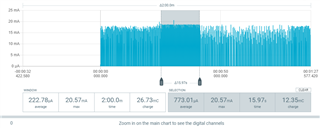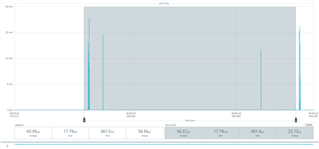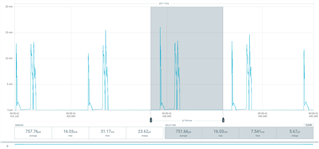I loaded the BLE peripheral HRS example from the Nordic SDK 17.0.2 on an nrf52840 DK. I connected a PPK II while connecting the peripheral using an nrf52840 dongle and the nrfconnect BLE pc app. I would connect to the nrf52840 DK via nrfconnect and then manually enable notifications on the heart rate measurement characteristic. There was a delay of 20 seconds or so between the initial connection and when I enabled notifications.
I noticed that the average current is an order of magnitude greater after connecting to the peripheral but before notifications are enabled compared to after notifications are enabled. Any insight as to why the difference in average current draw is so great would be much appreciated.
post connection, pre notification enable

post connection, post notification enable





